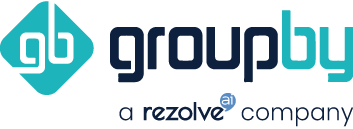Over 2 billion people are expected to buy goods online this year – an estimated 27% of the world’s population – so it has never been more important to understand customer intent.
When a customer searches for products on your website, whether they realize it or not, they have an intent or a need. It can be very general, “I need something to wear this weekend,” or very specific, “I need the iPhone 12 Pro.” The best eCommerce companies will work to remove friction from the shopping experience by analyzing and understanding customer intent, satisfying customer needs and ultimately boosting revenue.
Customer Intent
So what does customer intent look like on a day-to-day basis? A user may browse T-shirts, which shows intent. They may then avoid the women’s and children’s filters, opting for the men’s category. So now you know a little bit about the customer and their intentions. The next time they search for T-shirts, the men’s category can be pushed to the top, rather than having them wade through women’s and children’s options.
Customer Intent vs Customer Preferences
Customer preferences are attributes, such as brand, size, material and color, that a particular shopper prefers. Over time, these preferences can reliably predict customer intent, or what the customer aims to purchase. Preferences can change by category, like preferring white T-shirts but not white jeans. In fact, choosing a category is usually the first indication of a customer’s intent – that they are interested in T-shirts – and then they can make preference refinements using filters, such as choosing white.
Why is Understanding Customer Intent Important?
If you have a grasp of customer intent, you can provide a seamless journey, from search through to add-to-cart and buy. It’s all about removing the roadblocks to purchasing. By getting customers to what they want as quickly as possible you are clearing the path to conversion, and everyone wins.
How Does it Work?
Beacons or tracking codes are set up to capture customer actions, intentions and behaviors on your website. They follow the entire funnel, from searches to views to refinements and final checkout, also capturing instances when a customer is lost along the way. The purpose of beacons is to help you better understand how customers interact with your site, your brands and your products. They capture data such as how many customers are searching for T-shirts and how many of them interact with Nike, Calvin Klein or Hanes, for example. From there you can see how many of those searches result in an add-to-cart, and how many lead to further filtering to narrow down choices. Beacons enable you to track customers through the conversion funnel, providing data and feedback to help turn browsers into buyers.
Measuring and Using Customer Intent
The funnel can be tracked using many metrics, including unique searches, click-through rates, add-to-cart rates, conversion rates, average order values and null searches. Also extremely useful are high-performing product analytics, as well as high-performing search term analytics that show which keywords drive more conversions for specific products. These analytics can inform your recommendations to current and future customers. The goal is to intelligently place the right products in the path of the right customers, and product price, quantity available and revenue generated can also play a role. To help customers find what they need in the fewest clicks, recommendations can be made based on popular/trending products or searches, as well as on what other people have viewed or bought. A “type-ahead search suggestion” can help make this process really user friendly.
Analyzing how customers navigate and engage with your site is another great way to gain an understanding of customer intent and provide a better customer journey. Navigation engagement essentially shows what customers are doing on your site, such as performing searches, viewing products, applying filters, purchasing or exiting without purchasing. It can show you how your navigation and filters are working and enable you to place highly interactive navigations at the top to make searches simpler. For example, when purchasing an iPhone the filters, or preferences, the customer selects, such as version and price range, can be associated with their visitor ID in your browser. If this visitor ID then leaves and returns to look at iPhones in another session, they (and users similar to them) will see the same version and price range filters at the top of the list.
What’s really exciting is that the algorithm keeps on learning. So, the following day, if that visitor changes their preferences to screen size and camera resolution, then the algorithm will keep on updating to build a richer profile of that visitor ID. In the end, the point is to capture intent and realign products and filters to ensure that the high-performing, highly relevant ones are always pushed to the top.
In addition to making shopping easier for the customer, analytics can also show you where there are issues or roadblocks in the path to purchase. For example, if a customer searches, refines their search and then exits, this could mean you don’t have a product that matches their needs, you don’t have inventory in their size, the product is out of stock or it’s miscategorized. When this happens the user journey is lost, but analytics can help you identify and fix those issues.
If customers are searching and receiving no results, null search analytics can help you avoid lost revenue by analyzing what users do before and after encountering a null search. If it turns out the null search is a result of a typo or imprecise search language, for example, then you can add rules, synonyms, phrases and more to correct the issue. No matter what, there is no need to show customers a no-results page. They can be redirected to a different category or a similar set of products, which may end in a sale.
Summary: The Future is All About Personalization
In this digital-first era, as more and more customers are going online by default to make their purchases, eCommerce companies are struggling to retain customer loyalty. Why? In the competitive digital space, customers will often forego loyalties for a better shopping experience – finding the right products at the right prices, with filters and recommendations personalized to their needs. Using advanced machine learning (ML) and artificial intelligence (AI) to better understand shopper intent can help companies provide truly relevant search results and highly personalized recommendations. The goal is to create engaged customers who trust their website and choose it above all others to fulfill their needs.
GroupBy’s AI-powered Product Discovery solutions are a differentiating factor for companies looking to create personalized customer experiences and secure customer loyalty in the digital-first era. We help eCommerce companies like yours analyze and understand customer intent to provide hyper-relevant, personalized search results, drive up conversion rates and increase revenue.
Ready to make your platform more profitable? Let’s talk!


